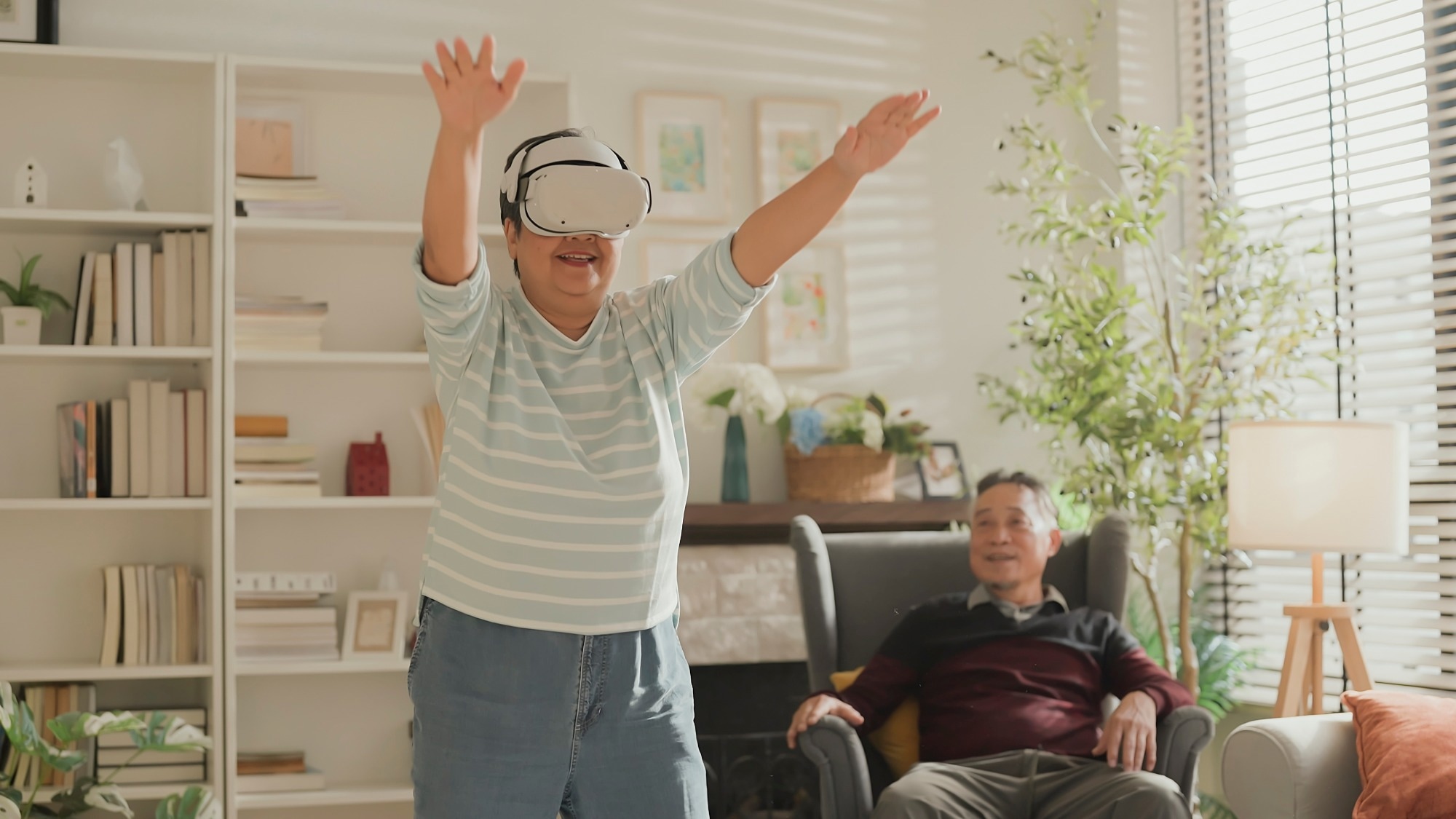Scientists report that a 12-week gamified exercise program not only sharpened recall but also increased hippocampal volume, pointing to a potential new tool for delaying dementia.
 Study: Structural brain improvements following individually tailored serious exergame-based training in mild neurocognitive disorders: exploratory randomized controlled trial. Image credit: WHYFRAME/Shutterstock.com
Study: Structural brain improvements following individually tailored serious exergame-based training in mild neurocognitive disorders: exploratory randomized controlled trial. Image credit: WHYFRAME/Shutterstock.com
A recent study in Alzheimer's Research & Therapy investigated the impact of adding ‘Brain-IT’ training to the usual mild neurocognitive disorder (mNCD) care for improving cognitive performance and immediate and delayed verbal recall.
Characteristic brain structure changes in mNCD
Individuals with mNCD, a DSM-5 diagnostic category, have higher disruptions in white matter (WM) microstructure and accelerated brain atrophy, compared to those with normal aging. These structural anomalies are proportional to the disease stage. Typically, these brain structural anomalies are detected most prominently in the medial temporal lobes, such as the hippocampus, and to a lesser extent in the frontal lobes, specifically the anterior cingulate cortex (ACC) and prefrontal cortex (PFC).
Based on the findings of several studies, hippocampal atrophy is regarded as a key indicator of Alzheimer’s disease. In addition, cerebrospinal fluid biomarkers (e.g., Aβ42 level, tau, or p-tau) and cognitive performance help clinicians determine disease progression. Interventions are primarily designed to have a protective effect on these brain structures.
Strategies to alleviate mNCD
Many nonpharmacological interventions have been developed to mitigate cognitive decline in mNCD, including multicomponent physical and motor-cognitive training. The activation of neurogenesis plays a significant role in restoring, decelerating, and rejuvenating structural pathways associated with hippocampal aging or disease-related abnormalities. Researchers target neurogenesis to improve hippocampus-dependent cognition.
A combination of physical and cognitive exercises helps stabilize neuroplastic processes, which aid in the survival and integration of new neuronal structures in brain circuits. This approach elevates brain and cognitive reserve, thereby enhancing an individual’s ability to maintain independence in daily functioning despite neurodegenerative changes. Therefore, physical and motor-cognitive training has been recommended to increase longevity and prevent dementia.
Exergames are interactive and gamified digital health technologies that have demonstrated positive effects in healthcare. Previous research has highlighted that well-designed and personalized exergame-based training can effectively activate neuroplasticity and enhance cognitive performance in people with mNCD. Considering the benefits of exergame-enhanced interventions, they have emerged as an effective strategy to improve cognition and memory across various populations and age groups.
Despite its advantages, few studies have examined the structural alterations in the brain following exergame-based training in individuals with mNCD.
About the study
The current study investigated structural brain changes after adding ‘Brain-IT’ training to usual care provided to people with mNCD, and compared the outcome with those who received only conventional care. Brain-IT training has been designed as a secondary prevention measure for mNCD, based on the “exercise as medicine” approach.
A two-arm, parallel-group, single-blinded randomized controlled trial (RCT) was conducted using a sample of older adults with mNCD. Participants were divided into intervention and control groups at a 1:1 ratio. Individuals with mNCD were recruited between May 2022 and October 2023 from clinics in the larger areas of Zurich and St. Gallen.
All participants had an MRI scan within two weeks before starting and after completing the intervention (pre-measurement and post-measurement, respectively). The control group received the usual care at the clinic, while the intervention group participants received an additional exergame training system. After a 12-week intervention period, post-intervention measurements were taken in both groups.
Study findings
Structural neuroimaging analyses were performed on 30 participants, with an average age of 72 years and a 27% female representation. In the study cohort, 87% of participants had a biomarker that supported the etiology of mNCD, primarily Alzheimer’s disease.
Although both groups of participants fell within a ‘healthy’ body mass index (BMI) range, the intervention group participants exhibited higher BMI than the control group. However, the difference in BMI among participants of the two groups was not statistically significant.
Based on MRI data, the intervention group showed improvement in the CERAD total score for global cognitive performance from 58.9 points at pre-measurements to 62.1 points at post-measurements. The control group declined from 51.6 points to 48.7 points. Furthermore, the intervention group revealed a statistically significant effect with moderate to large effect sizes for immediate and delayed verbal recall.
Intervention group participants underwent significant alterations in the gray matter volume (GMV) in the right hippocampus, total hippocampus, and left thalamus. Additionally, normalized GMVs of the left hippocampus and the right thalamus were observed. These structural changes were reported as exploratory correlations with improvements in cognitive performance rather than evidence of causality. Improvement in verbal delayed recall has been associated with alterations in GMVs of the total hippocampus and left thalamus.
Fractional anisotropy (FA) increased more in the intervention group than in the control group. Group comparisons also showed clusters of significant voxels in the left optic radiation, which were not interpreted as training-related benefits. The current study identified 12 white matter tracts associated with observed cognitive improvements.
Conclusions
The current RCT revealed that personalized exergame-based training may positively influence brain structures affected by mNCD. Most structural changes were found in the hippocampus and subregions of the central autonomous network, such as the thalamus and ACC. These structural changes were associated with improvements in verbal delayed recall.
The authors emphasized the exploratory nature of the trial and its small size (n=30), which limits the generalizability of findings. In the future, long-term RCTs must be performed to validate the disease-modifying effects of physical and/or motor-cognitive training. The neurobiological effects should be monitored to optimize exergame-based training concepts further for better outcomes.
Download your PDF copy now!